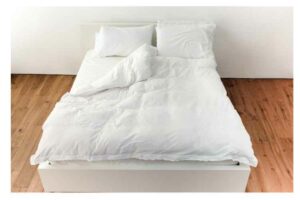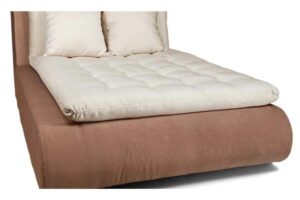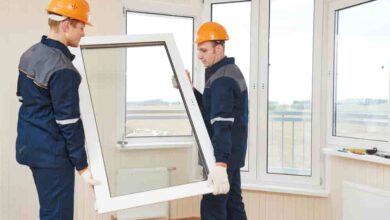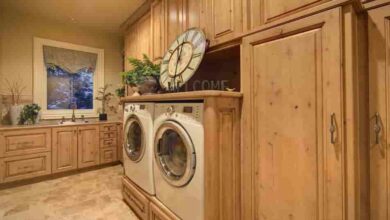Ensuring Donated and Second-Hand Beds Meet Standards
Considering a second-hand or donated bed? Ensure it meets safety standards for a secure night’s sleep. Many initiatives offer free beds for low income families, aiming to provide comfort and safety. This article guides you through such programs’ benefits and inspection criteria, emphasizing the importance of safety, sustainability, and making cost-effective choices for those in need.
Benefits of Ensuring Second-hand and Donated Beds Meet Standards
Ensuring that second-hand and donated beds meet standards not only benefits you by providing a safe and comfortable sleeping environment, but it also contributes to the overall well-being and health of those who are less fortunate and rely on these beds for a good night’s sleep.

By ensuring that these beds meet standards, you can rest easy knowing that you are sleeping on a bed free from potential hazards such as bed bugs, mold, or structural defects.
When beds meet standards, they can provide the support and comfort needed for a good night’s sleep, promoting better physical and mental health.
For those less fortunate and who rely on these beds, having access to safe and comfortable sleeping arrangements can make a significant difference in their lives, providing them with a sense of security and dignity.
So, by ensuring that second-hand and donated beds meet standards, you benefit yourself and contribute to the well-being and health of others in need.
Safety
Ensuring donated and second-hand beds meet standards includes considering the safety of the recipients. When it comes to providing beds that have been previously used, it’s crucial to prioritize the safety of those who will be using them.
By implementing and enforcing safety standards, we can help prevent potential accidents or injuries that may arise from using substandard beds. This means thoroughly inspecting each bed for any signs of damage or wear and tear, such as broken or loose parts, sharp edges, or unstable structures.
Also, checking for potential health hazards, such as bed bugs or allergens, is essential. By taking these safety precautions, we can ensure that the recipients of these donated and second-hand beds can sleep soundly and comfortably without compromising their well-being.
Comfort
Creating a cozy and inviting sleeping experience is essential for recipients of previously used beds. When ensuring the comfort of donated and second-hand beds, it’s essential to consider factors such as mattress quality, pillow support, and overall bed condition.
Ensure the mattress is firm enough to provide adequate support and plush enough to offer a comfortable sleep surface. Consider providing pillows that aren’t just soft and fluffy but also provide proper neck and head support.
Check the overall condition of the bed, including the frame and any additional accessories, to ensure they’re in good working order and free from discomfort-inducing issues such as broken springs or sagging.
By taking these steps, you can help recipients of donated and second-hand beds enjoy a comfortable and restful night’s sleep.
Quality
To ensure you have a truly satisfying and luxurious sleep experience, focus on the bed quality you choose.
When considering donated or second-hand beds, it’s essential to inspect the overall condition and construction of the bed carefully. Look for any signs of wear and tear, such as sagging or broken springs, loose or damaged frames, or worn-out mattresses.
Check for any stains or odors that indicate a lack of cleanliness or hygiene. Ensure the bed meets safety standards and regulations for your well-being while sleeping.
By prioritizing the quality of the bed, you can rest easy knowing you’ve made a wise choice for a comfortable and secure night’s sleep.
Guidelines for Inspecting and Testing Second-hand and Donated Beds
To properly assess the quality of pre-owned beds, following guidelines for inspecting and testing them is crucial. This includes beds of all types, even specialized ones like a Bed For Couples That Sleep In The Middle Of A Bed.

Start by visually examining the bed frame for any signs of damage or wear. Check the joints and corners for stability, ensuring no loose or missing screws. If you’re looking at a bed for couples sleeping in the middle, pay special attention to the central support, as this area can experience more wear over time.
Next, inspect the mattress for stains, tears, or sagging areas. Especially with beds where couples tend to sleep in the center, you’ll want to ensure the middle of the mattress isn’t unduly sagging or showing signs of excessive wear. Test the mattress by sitting on different areas and applying pressure to determine if it provides adequate support.
Check for signs of bed bugs or other pests by carefully inspecting the seams and crevices. And, if the bed has any adjustable features, like reclining or height adjustments, be sure to test these out as well.
By adhering to these guidelines, you can ensure that the second-hand or donated bed, whether a standard design or one made for couples who prefer the middle, meets the necessary standards for safety and quality.
Visual Inspection
Inspecting donated or second-hand beds is like going on a treasure hunt, ensuring that each piece meets safety and quality requirements.
When conducting a visual inspection, start by examining the overall condition of the bed frame, checking for any signs of damage, such as cracks, dents, or loose screws.
Look for any sharp edges or protruding parts that could potentially cause injury.
Inspect the mattress for any stains, tears, or signs of wear and tear.
Check for bed bugs or other pests that could pose a health risk.
Pay attention to the bed’s construction, ensuring that all parts are securely attached and that there are no missing or broken slats.
By thoroughly inspecting the visual aspects of donated or second-hand beds, you can ensure they are safe and meet the necessary standards before being used or resold.
Safety Tests
Before you purchase or use a bed, you must conduct safety tests to ensure it’s secure and reliable.
Start by checking the stability of the bed frame by pushing and shaking it to see if it wobbles or moves quickly.
Next, inspect the mattress for wear or damage, such as sagging or protruding springs. Make sure the mattress fits snugly within the bed frame without any gaps.
Examine the bed rails or guardrails to ensure they’re sturdy and adequately attached to prevent falls.
Test the functionality of any adjustable features, such as the head or footrest, to ensure they work smoothly and safely.
Lastly, check for sharp edges or protruding hardware that could cause injuries.
By conducting these safety tests, you can have peace of mind knowing that the donated or second-hand bed meets the necessary standards for your safety and comfort.
Comfort Tests
To truly experience a good night’s sleep, it’s essential to verify the comfort of the bed through simple tests.
When testing the comfort of a donated or second-hand bed, start by lying down on it and assessing how it feels. Please consider how the mattress supports your body and whether it feels too firm or soft.
Roll around and change positions to gauge if the bed provides adequate support and minimizes pressure points. Check for any lumps or sagging areas that could affect your comfort.
Don’t forget to assess the pillows, ensuring they offer the right level of support for your head and neck.
By conducting these simple comfort tests, you can ensure that the bed you receive will provide a restful and comfortable sleep experience.
Quality Tests
When testing the comfort of a bed, it’s important to conduct quality tests to ensure a durable and long-lasting sleep surface.
You want to make sure that the bed is comfortable to sleep on and built to withstand regular use and maintain its shape over time.
Quality tests may involve checking the bed frame’s sturdiness, inspecting the mattress’s stitching and seams, and evaluating the materials used in its construction.
By conducting these tests, you can ensure that donated and second-hand beds meet the necessary standards for durability, providing a safe and reliable sleeping surface for those in need.
Safety Standards for Second-hand and Donated Beds
Following safety guidelines, evaluating the quality of pre-owned beds is essential. Regarding second-hand and donated beds, safety standards play a crucial role in ensuring the well-being of the users.

These standards focus on structural integrity, mattress condition, and hygiene. Inspecting the frame for any signs of damage or weakness is essential to prevent accidents or collapses. Similarly, checking the mattress for sagging, stains, or signs of pests is vital, ensuring a clean and healthy sleeping environment.
Beyond hygiene and safety, it’s worth noting that good mattresses boost posture and well-being. A bed that supports the spine correctly can significantly affect sleep quality and overall health.
Adhering to safety standards and choosing the right mattress can help ensure that donated and second-hand beds offer a safe, comfortable, and health-promoting sleeping experience.
Federal Requirements
Ensure that donated and second-hand beds meet federal requirements by understanding the guidelines and checking for proper certifications so you can rest easy knowing you’ve made a safe and responsible choice.
When purchasing used beds, it’s essential to research the specific federal requirements that apply to them. Look for labels or documentation that indicate compliance with safety standards, such as flammability, structural integrity, and chemical content.
Check for any product recalls or warnings issued by the Consumer Product Safety Commission (CPSC). By being aware of these guidelines and doing your due diligence, you can ensure that the bed you choose meets federal requirements and provides a safe sleeping environment for you and your loved ones.
State Requirements
To guarantee a safe and responsible choice, it’s crucial to familiarize yourself with state requirements regarding donated and second-hand beds. Each state has its regulations to ensure that these beds meet specific standards.
These requirements often include guidelines for the condition of the bed, such as ensuring it is free from bed bugs, stains, and other potential hazards. Additionally, states may have specific labeling requirements to inform consumers about the bed’s history and condition.
By understanding and adhering to these state requirements, you can help ensure that the donated or second-hand bed you choose is safe and meets the necessary standards for use.
Local Requirements
Check out your local requirements for donated or second-hand beds so you can be confident that the bed you choose is safe and meets all the necessary standards.
Local requirements may vary, so it’s essential to research and determine what regulations are in place in your area. This could include guidelines on the condition of the mattress, the presence of any hazardous materials, or the age limit for certain types of beds.
By familiarizing yourself with these local requirements, you can ensure that the bed you select is comfortable and affordable and meets all safety standards to protect you and your family.
Conclusion
In conclusion, ensuring second-hand and donated beds meet safety standards is vital for user well-being. Proper inspection detects defects and boosts community confidence in bed quality. Let’s prioritize safe bedding for all, irrespective of financial constraints.



